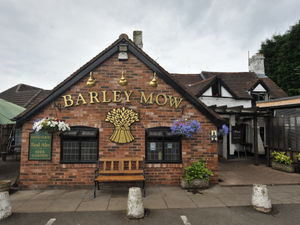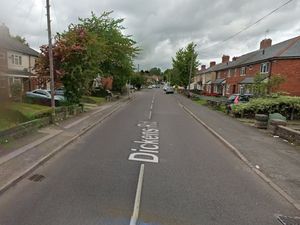Researchers discover Wolverhampton man's secret past
He was a happily married insurance agent with a secret that he took to the grave.

Geoff Hanley was known to be a keen radio ham but nobody realised exactly what he was doing once he donned a pair of special issue headphones in his garden shed.
He would leave his family night after night to operate from the 'radio shack' that was specially blacked out for fear of air raids and in which he kept a sten gun, Lee Enfield 303 rifle and hand grenades.
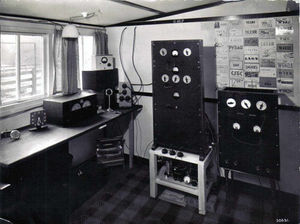
When the siren sounded he ensured his wife, two children and dog were safe in the shelter he had dug in the garden of their Wolverhampton home but he would not join them. He stayed above ground at his post in the shed continuing to secretly monitor German military radio signals.
The operation was so hush-hush that even he may not have been entirely sure how the information he gathered was being used. But he was certain of two things - it was important and he could not speak about it to anybody outside those he worked with.
That meant wife Annie and sons Philip and Robert were kept in the dark, along with colleagues in the Home Guard communications unit with which he served during the Second World War as a Civil Defence Officer , in a base at Bantock House just yards from his Uplands Road, Finchfield home.
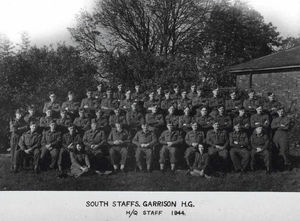
Mr Hanley – a naval wireless operator during the First World War – had been secretly recruited as a Voluntary Interceptor by the Security Services to monitor German military radio short wave communications from home during the Second World War.
These included Enigma coded messages which were sent to experts at the Government cypher centre at Bletchley Park where they were used in the operation that broke the code in a move reckoned to have shortened the war by up to four years.
It is believed he regularly met up with David Etchalls – another secret listener based in Wolverhampton – to share notes before they went to Bradmore post office and dispatched them to Bletchley Park.
The work of the Voluntary Interceptor was so secret it was not made public until the late 1970s and a BBC documentary, made in 1979, told their story.
But the names of many of the near 1500 radio enthusiasts nationwide who had been covertly recruited for the work by the Secret Service were not disclosed.
So Mr Hanley's involvement remained unknown until a few months ago, many years after his death, when researchers at Bantock House Museum in Wolverhampton stumbled on the first clue to his secret double life.
The mystery of his war time heroics is now being unravelled by them after a chance call from Harry Platt, 91-year-old man who had got to know Mr Hanley while delivering groceries to the family in the late 1930s.
Mr Platt, now living in Ashmore Park, was a wireless-mad teenager working as an errand boy and recalled: "I had been playing with crystal sets from the age of 12 and two years later was begging people to give me their old wireless so that I could mess about with them and learn how they were built.
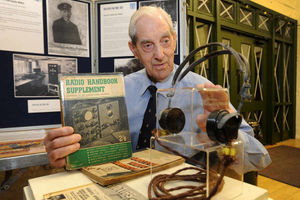
"I regarded Geoff and his family as well-to-do people when I started delivering groceries to their house . He was a rich man as far as I was concerned. We were poverty-stricken when I first met him at the age of 16 at the end of 1939. Before that I had always dealt with his wife because he was at work when I called.
"One day I mentioned the 20 foot wireless pole in the back garden with a cable leading to a garden shed and explained that I was fascinated by wireless. Mrs Hanley said: 'My husband would be interested to show you around the shed' or radio shack, as he called it. And that is exactly what he did when I returned one evening soon afterwards.

"He was very kind to me and our relationship grew leaving me hooked on the world of wireless and communications for the rest of my life. He would let me listen in as he got in touch with radio hams all over the world. He would say things like 'oh, this is my friend in America' and show me how to use the equipment. I loved listening to the sound of the morse code.
"In 1940 my brother Ralph was killed by a bomb in North Africa. He had only been in the army for 18 months. I was unfit for military service and mentioned my brother's death to Geoff whom I was going to see at least once a week at the time. He showed me a cutting from a newspaper that was a propaganda poster which claimed to show the Nazi war aims. He said: 'Look at this. What are the government doing about it?'
"Then he showed me a cloth map that indicated the countries that had been taken over by the Nazis and how they intended to dominate the world. All the countries seemed to be coloured red. He said: 'We got this off a captured German officer.'
"I am sure that he once mentioned something about intercepting radio transmissions in an effort to break the secret code of the Germans but these were conversations I had over seventy years ago. I knew he was doing something important for the government but only began to realise what it was after the news broke about the Voluntary Interceptors all those years later.
"Geoff and his family moved from Uplands Road to Paget Road after the war and I lost touch with him but before he left he gave me some of his equipment. Among them was a set of headphones and some handbooks and magazines. I realised that I was not getting any younger and the items might be of some use to a local museum and so I approached Bantock House."
Helen Steatham, its curator, said: "We are offered things every week but often have to turn them down. Fortunately, when he called, we were trying to get more details of the important role played by the the Home Guard unit that was based here after Bantock House was requisitioned by the military during the Second World War and turned into the regional communications centre for the West Midland. We were surprised and delighted when we saw what Harry had."
Anne Almond, a volunteer researcher at Bantock House, explained: "It is like putting together a giant jigsaw puzzle without knowing exactly what the picture is meant to look like when it is finished. So little has been written about this that you have to rely on the memories of those who were there at the time."
Inquiries revealed that the headphones handed over by Mr Platt – serial number MD2455 – had been manufactured by Western Electric USA and were issued to Voluntary Interceptors. It was the first clue that there had been far more to Mr Hanley that had met the eye. There were also literature including the Admiralty handbook of wireless telegraphy.
His son Robert, a former Wolverhampton police officer now living in Telford, confirmed: "My father spent night after night in the radio shack but never spoke to us about what he was doing there. He took his secret to the grave which goes to show the respect he had for the Official Secret Act and may have been protect my brother, mother and I.
"I knew nothing about this until contacted by Bantock House but now I feel very proud now that I have been told something of what he did. I only wish I knew more about them."
Grandson David Hanley, a 49-year-old father of four and environmental services manager living in Telford, said: "It was both enlightening and moving to discover a little of what my grandfather did during the Second World War. I knew that people had taken war secrets to the grave but had no idea there was such secrecy in my own family just a generation away from myself.
"I am very proud and humbled that he could play such a key role in such an important part of the war. Despite not being able to contribute physically to the war effort, he was able to fulfil his duty in another way. I am sure that his actions and those of his colleagues saved many lives. Like others he had done his bit in the First World War but was ready to serve again."
Communications expert Mr Hanley was born in Leeds on December 10 1899 and died aged 67 in Wolverhampton. He met his wife in Southport where they married on August 19 1930. It is thought they met through a mutual interest in music. He played a banjo in a band while she was a pianist and singer.
He joined the Navy as a teenager serving as a wireless operator when he was probably involved in listening and intercepting enemy signals. This sparked his interest in radio operations. After leaving the services he worked for the cereal products department of Spillers in Wales and Birmingham before becoming an insurance agent. He helped to found the Southport Wireless Experimental Society in 1920. His call signs were 5AW - one of the earliest - and G8LP, that was his transmitting licence. He used an RME-69 receiver from 1938.
Amateur radio hams recruited as Voluntary Interceptors were asked to listen on HF for anything they could not recognise as genuine commercial or military transmissions and send them in by post written on a log sheet provided, that showed date, time, frequency and what was heard. Initially these went to the Secret Service in London where experts checked the logs and notified the amateur where they were not wanted or further intercepts were required. The organisation was given the title of the Radio Security Service (RSS).
They were logging whatever was heard and amongst it all located some strange stations using Ham Chat but with three letter call signs and on top of that sending messages in five letter groups of code. This was strictly forbidden for amateurs.
The MI5 experts in London looking at these reports managed to decipher some to discover that they were in a hand cipher that translated into German. Moreover the translation showed that they were not ordinary signals but apparently coming from the German Secret Service other organisations set up by the Nazis. Bletchley Park, previously uninterested or too busy, immediately took note and required all future messages to be sent to it.
It became apparent that there was a lot to be uncovered about these secret transmissions and increasing numbers of radio hams were recruited throughout the UK and the battle to break the Enigma code began in earnest.

